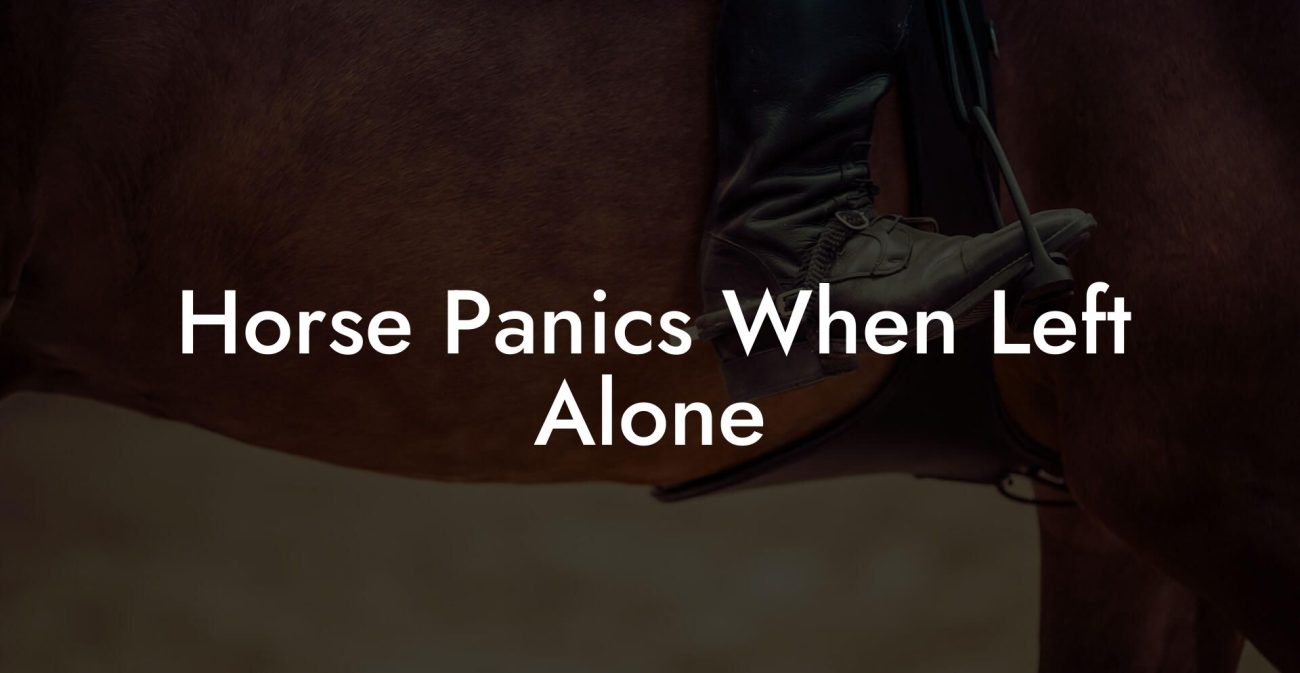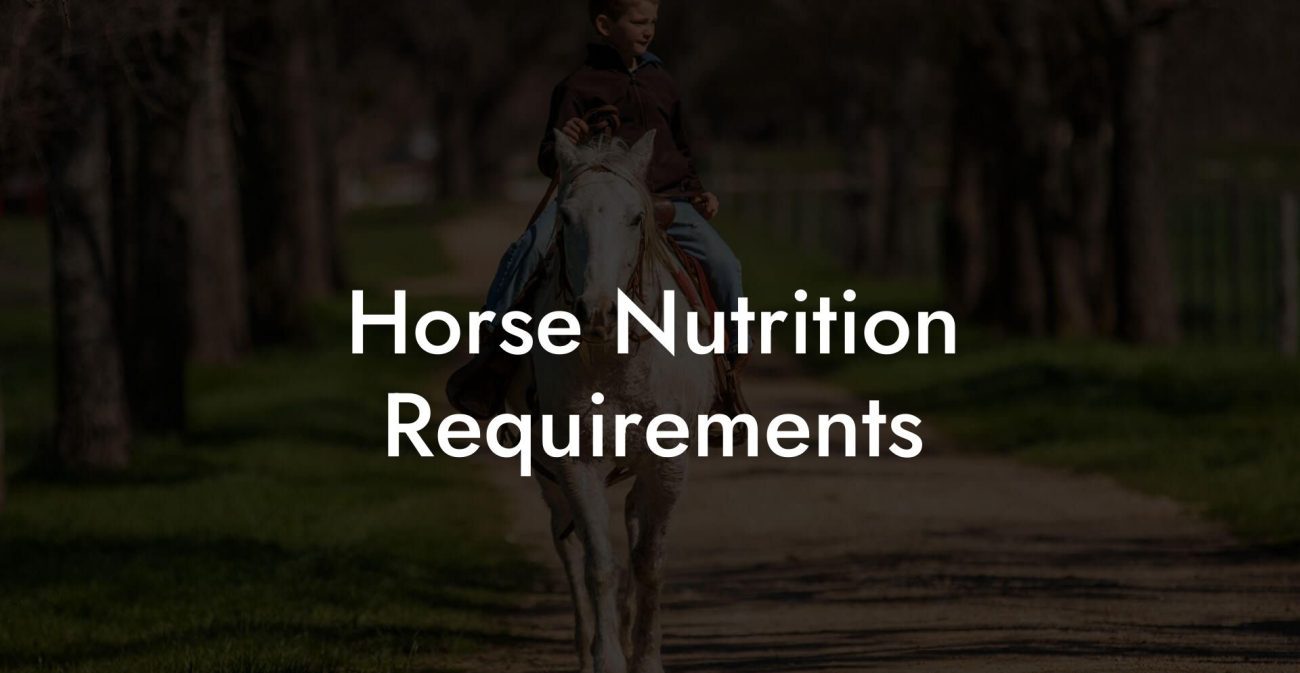There's nothing quite as satisfying as watching your equine partner strut their stuff with absolute confidence, knowing that every inch of their back is perfectly measured for the saddle that will carry you both to new adventures. Whether you're a seasoned rider or a curious newcomer to the world of horses, nailing down the precise measurements for your horse’s saddle can feel like unlocking a secret level in a video game, one where comfort, performance, and style converge into one perfect package.
Quick Links to Useful Sections
- The Importance of a Perfect Saddle Fit
- Understanding Your Horse’s Anatomy: Key Measurements Explained
- Tools of the Trade: What You’ll Need
- Step-by-Step Guide: How to Measure a Horse for a Saddle
- Step 1: Measure the Back Length
- Step 2: Determine the Withers Height
- Step 3: Gullet Width Measurement
- Step 4: Check the Shoulder Angle and Chest Width
- Step 5: Consider the Spine and Back Curvature
- Step 6: Double-Check and Record Everything
- Modern Technology: Enhancing Traditional Measurement Techniques
- Common Challenges and How to Overcome Them
- Nervous or Restless Horses
- Inconsistent Measurements
- Dealing with Unique Conformations
- Weather and Environmental Factors
- Integrating Saddle Fitting Into Your Overall horse care Routine
- Decoding Saddle Types: Matching Measurements with Style and Function
- English Saddles
- Western Saddles
- Endurance and Trail Saddles
- Custom Saddle Fitting vs. Off-the-Shelf Options
- Real-Life Stories: Saddle Fitting Successes and Lessons Learned
- The Overlooked Withers Measurement
- Customized Comfort: A Tale of a Bespoke Saddle
- A Lesson in Consistency
- Rider’s Role in Achieving the Perfect Fit
- Resources and Community Support: Your Next Steps
- Enhancing Your Equine Experience with Ongoing Evaluation
- Exploring Innovative Saddle Designs and Materials
- Breaking Down the Numbers: Understanding Size Charts and Measurements
- Your Journey to a Perfect, Custom-Fitted Saddle
- Integrative Saddle Fitting FAQs: Your Questions Answered
- Your Journey to a Flawless Saddle Fit
The Importance of a Perfect Saddle Fit
A well-fitted saddle isn’t just a luxury; it’s a necessity for healthy, happy horses and safe, enjoyable riding sessions. Incorrect measurements and a poorly fitted saddle can lead to discomfort and even long-term injuries for your horse. Picture this: a saddle that pinches here, rubs there, it's not just annoying, it can wreak havoc on your horse’s muscles and posture.
For riders, a saddle that fits correctly will provide better balance, control, and communication with your horse, elevating your riding experience and boosting your confidence whether you're hitting the arena, trekking through rugged trails, or just enjoying a leisurely ride around the paddock.
In essence, measuring your horse for a saddle is all about harmonizing the natural contours of your horse’s body with the design of the saddle. When done right, it’s a win-win: a contented horse and a riding experience that’s smooth, effective, and even a little bit magical.
Understanding Your Horse’s Anatomy: Key Measurements Explained
Before you even pick up a tape measure, it’s crucial to understand the anatomy of your horse. Just as we wouldn’t size ourselves based solely on height when buying clothes, measuring a horse for a saddle requires an intimate understanding of its unique body structure.
Here are some of the key areas you’ll need to measure:
- Back Length: This is the distance from the base of the withers to the point of the croup. It’s the backbone of the saddle fitting process, pun intended!
- Withers Height: The highest point on a horse’s back, right where the neck meets the body. A saddle that sits too low or too high can cause discomfort in this area.
- Gullet Width: The space between the bars of the saddle, which must match the width of the horse's withers to avoid pressure points.
- Shoulder Angle: Measuring the slope of the shoulders gives insight into how the front of the saddle will align with the horse’s body.
- Chest and Ribcage Width: This measurement ensures that the saddle’s tree fits comfortably around the horse’s chest without pinching or causing excessive movement.
- Spine Length and Curvature: Understanding the curvature of your horse’s spine is critical, particularly for performance horses which rely on a saddle that supports their natural movement.
Familiarizing yourself with these measurements is the first step in ensuring that your chosen saddle will complement your horse’s structure rather than work against it.
Tools of the Trade: What You’ll Need
Measuring a horse isn’t as daunting as it might seem once you have the right tools. Here’s a quick rundown of what you should have in your saddle-fitting toolkit:
- Flexible Measuring Tape: A soft, flexible tape measure is ideal for taking accurate curves and lengths.
- Notepad or Digital Device: Keep track of your measurements. Trust us, you’ll want to jot down every detail.
- Marker or Non-Toxic Chalk: Use this to mark measurement points on your horse’s body if needed. Make sure it’s safe and non-irritating.
- Assistant: While not strictly necessary, having a second set of eyes (or hands) can be incredibly helpful during the process.
- Calm Environment: Your horse should feel relaxed and comfortable, so choose a quiet time and place for your measurements.
With these tools in hand, you're ready to embark on the adventure of measuring your horse – a journey that’s as hands-on and personal as it is scientific.
Step-by-Step Guide: How to Measure a Horse for a Saddle
Ready to dive in? Let’s break down the measuring process into digestible steps that will ensure you capture every necessary dimension to get the ideal fit.
Step 1: Measure the Back Length
Start at the point where you imagine the saddle will most naturally sit: the back. Using your flexible measuring tape, determine the distance from the base of the withers (the highest point on your horse’s shoulders) to the point of the croup (just before the tail begins).
Ensure that the horse is standing squarely with its weight evenly distributed. It might help to have a friend gently lead the horse in a straight line while you take your measurements.
Step 2: Determine the Withers Height
For withers height, position your measuring tape at the base and measure up to the highest point where the neck gracefully meets the back. This measurement not only dictates how snugly the saddle will fit around the highest part but also influences the overall design and placement of the saddle.
It’s important to record this number accurately because even a small error can result in a saddle that sits too low or too high, potentially leading to pressure points or poor weight distribution.
Step 3: Gullet Width Measurement
The gullet width is a critical measurement as it ensures that the saddle will clear the horse’s withers without constricting them. Gently place your measuring tape over the top of the withers, and determine the distance between the two most prominent points on either side.
A correctly measured gullet width will allow for natural movement, giving your horse the freedom to breathe and step without interference.
Step 4: Check the Shoulder Angle and Chest Width
The angle of the shoulders can influence the saddle’s front panel design. Gently follow the contour of the horse’s shoulder and measure the angle at which it slopes downward. Additionally, measure the width of the horse’s chest right behind the front legs.
These measurements ensure that the saddle can be designed (or selected) to accommodate variations in horse conformation, particularly for those animals with more angular or rounded shoulders.
Step 5: Consider the Spine and Back Curvature
Every horse’s back has its unique curve, impacting how the saddle will conform to their shape. Use your flexible measuring tape along the spine from the base of the neck to the croup to get an idea of how the back curves. This measurement can be a bit tricky, as it requires a gentle touch and some practice to follow the natural contour without distorting the tape.
If your horse has a noticeably arched back or a flat profile, make a note, these nuances may call for a customized saddle or specific adjustments in the padding to avoid pressure points.
Step 6: Double-Check and Record Everything
Once you’ve taken all the key measurements, it’s essential to record them meticulously. Double-check each measurement to ensure accuracy and consistency. A small error can lead to a saddle that might seem close enough on paper yet ends up being uncomfortable in practice.
Creating a detailed measurement log, either on paper or in a digital format, is highly recommended. Not only will this guide your initial saddle purchase, but it’s also invaluable if you ever need to revisit or adjust the fit in the future.
Modern Technology: Enhancing Traditional Measurement Techniques
While the trusted tape measure and your keen eye have been the backbone of saddle fitting for centuries, modern technology is stepping into the arena with innovative tools that take the guesswork out of the process.
Today, equestrian enthusiasts have access to smartphone apps and 3D scanners that can capture every curve and contour of your horse’s back with pinpoint accuracy. These digital tools not only streamline the measuring process but also provide data that can be easily shared with saddle makers and veterinarians.
Imagine sending over a 3D model of your horse’s back alongside your measurement log! With these advancements, customization becomes more precise, ensuring that the saddle not only fits but enhances your horse's comfort and performance. This intersection of traditional craftsmanship and modern technology is transforming the way we approach equine care and saddle fitting.
Common Challenges and How to Overcome Them
Despite the best-laid plans, measuring your horse for a saddle can sometimes present a few challenges. Here’s a rundown of common issues and practical tips to navigate them:
Nervous or Restless Horses
One of the biggest challenges is keeping a skittish or overly energetic horse still long enough to get accurate measurements. The key here is patience and a calm environment. Use gentle voice tones, treats, or even a calming companion horse to create a relaxed atmosphere.
Consider taking measurements during a quiet moment of the day, perhaps after a mild exercise session when your horse is naturally more relaxed.
Inconsistent Measurements
It’s not uncommon to get slight variations in your measurements when you repeat the process. To combat this, take several readings of each key area and calculate an average. Consistency is key, if results vary widely, it might be wise to enlist the help of a professional saddle fitter to ensure accuracy.
Dealing with Unique Conformations
Every horse is unique, and some may have atypical conformations, such as a very high or low withers, an unusually angled shoulder, or a curved back. When faced with these scenarios, customization may be necessary. Work closely with saddle makers who specialize in bespoke equestrian equipment, and don’t be afraid to ask for adjustments if something doesn’t feel quite right.
Weather and Environmental Factors
Temperature, humidity, and even the surface on which you’re measuring can affect the positioning and behavior of both your horse and your measuring tools. Aim for a consistent, controlled environment where external factors are minimized, ensuring that your measurements remain accurate regardless of the weather.
Integrating Saddle Fitting Into Your Overall horse care Routine
Measuring your horse for a saddle is just one part of the larger puzzle of excellent equine care. A properly fitted saddle complements a holistic approach to horse health that includes regular veterinary check-ups, proper nutrition, and consistent exercise.
Just as the perfect saddle enhances performance and comfort, consistent monitoring and adjustments can prevent issues before they arise. If your horse’s conformation changes with age or muscle development, regular re-measurements and saddle adjustments should be a part of your long-term horse care strategy.
This integrated approach not only makes riding more enjoyable but also contributes to the overall well-being and longevity of your horse. Remember, a cozy, well-fitted saddle is symbolic of the care and attention you provide every day, it's a testament to your commitment as a rider and a caretaker.
Decoding Saddle Types: Matching Measurements with Style and Function
Once you’ve got your measurements locked down, the next step is selecting the right type of saddle. Just like choosing the perfect pair of sneakers or jeans, the right saddle makes all the difference. But what exactly should you consider?
The equestrian world offers a variety of saddle types, each designed for different riding disciplines and horse conformation:
English Saddles
English saddles require close attention to the horse’s back length and gullet width. The sleek design of these saddles demands precision, as even the slightest misfit can cause discomfort during high-intensity activities like dressage or show jumping.
Western Saddles
Western saddles, known for their deep seats and intricate detailing, provide a bit more leeway in terms of fit. However, ensuring the right back length and proper weight distribution is essential to prevent sore spots, as these saddles are built for long rides and rugged terrains.
Endurance and Trail Saddles
When it comes to endurance riding, comfort is king. These saddles are designed to minimize pressure points over extended periods of travel. Accurate measurements ensure that the saddle's padding and design work harmoniously with your horse’s natural contours for a stress-free ride.
By matching your horse’s measurements to the right saddle type, you’re optimizing both performance and comfort. Your choice should be influenced not only by aesthetic preference but by the utility and fit that best complement your horse’s unique anatomy.
Custom Saddle Fitting vs. Off-the-Shelf Options
In the vibrant world of equestrian gear, you have a choice: invest in a custom-made saddle tailored to your horse’s exact dimensions, or opt for an off-the-shelf model that comes in standard sizes. Both options have their merits, and the decision often boils down to budget, riding style, and individual horse needs.
Custom saddles are designed with a deep attention to detail. A saddle maker will take your recorded measurements and craft a piece that fits like a glove, ensuring even pressure distribution and optimized comfort. This bespoke approach not only caters to your horse’s unique curves but also allows for fine-tuning based on your riding techniques.
Off-the-shelf saddles, on the other hand, are more accessible in terms of cost and convenience. Many modern manufacturers offer adjustable systems or modular designs that allow for some customization. While these may not fit perfectly on the first try, minor adjustments by a skilled saddle fitter can often bridge the gap between standard sizing and your horse’s unique build.
Ultimately, your decision should weigh the pros and cons. If you’re passionate about achieving the pinnacle of comfort and performance, a custom saddle might be the way to go. But if you're working within a budget or need something versatile that fits a range of situations, an off-the-shelf option with room for a few tweaks can do the job just as well.
Real-Life Stories: Saddle Fitting Successes and Lessons Learned
Stories from the field are invaluable, they remind us that every horse is different, and so is every fitting experience. Here are a few real-world examples that showcase the impact of proper saddle measurement:
The Overlooked Withers Measurement
Emily, an avid rider with a love for classic English riding, initially overlooked the precise measurement of her horse, Sunny's, withers. After several rides, she noticed that Sunny was becoming stiff, and subtle signs of discomfort were emerging. With some research and guidance from a professional fitter, Emily re-measured Sunny’s withers and discovered that the saddle was sitting slightly too low. A few adjustments later, not only did Sunny seem to move more freely, but Emily also felt a significant improvement in communication during rides.
Customized Comfort: A Tale of a Bespoke Saddle
Mark, who competes in endurance riding, had struggled with an off-the-shelf saddle that just didn’t cut it on long journeys. Noticing that his horse, Blaze, was occasionally showing signs of discomfort, Mark decided to invest in a custom saddle. By working closely with an expert saddle maker and providing detailed measurements, the new bespoke saddle made a world of difference, Blaze’s performance improved, and Mark experienced fewer interruptions during long rides. This success story reinforces the value of precise measurement and personalized care.
A Lesson in Consistency
Sarah, a millennial equestrian with a penchant for precision, learned the hard way that a single day’s measurements might not capture the full picture of her horse, Apollo’s, build. Apollo’s dimensions varied slightly between sessions, depending on his stance and level of relaxation. Sarah started averaging multiple measurements and consulting with colleagues in online equestrian communities. The practice not only delivered a more accurate set of numbers but also ingrained the importance of consistency in saddle fitting, a lesson valuable for any horse owner.
These stories highlight that while measuring a horse may seem like a technical process, it’s intertwined with the art of understanding and caring for your equine companion.
Rider’s Role in Achieving the Perfect Fit
While measuring your horse is a critical step, the rider’s posture, weight distribution, and overall technique can influence how well a saddle performs. A perfect fit on paper doesn’t always translate into a perfect ride if the rider’s own biomechanics come into play.
Maintaining proper sitting position, balancing your weight evenly, and adjusting your riding style to complement the saddle’s design are all essential for maximizing comfort and performance. Engaging in regular core strengthening and flexibility exercises can help you maintain a balanced posture, reducing the stress on both you and your horse during rides.
Don’t be surprised if you find that your approach to riding changes as your saddle fit improves, this is a natural evolution that benefits both you and your equine partner.
Resources and Community Support: Your Next Steps
Once you’ve mastered the art of measuring your horse for a saddle, you’re ready to dive deeper into the vibrant community of equine enthusiasts. There are numerous online forums, social media groups, and local equestrian clubs where you can share your experiences, seek advice, and even connect with professional saddle fitters.
Educational resources, including video tutorials, step-by-step guides, and expert interviews, are also readily available. Look for content that not only teaches you the technical aspects of measurement but also celebrates the unique bond between horse and rider.
Your journey doesn’t end with the perfect measurement; it’s just the beginning. By continuously engaging with supportive communities and utilizing available resources, you'll stay ahead of the curve in both horse care and riding techniques. Embrace every opportunity to learn and grow, the perfect saddle fit is a dynamic target that evolves with every ride.
Enhancing Your Equine Experience with Ongoing Evaluation
Just like a smartphone that periodically updates its software to enhance functionality, your saddle fit may require occasional tweaks as your horse grows, changes, or as your riding style evolves. Continuous evaluation ensures that the saddle remains a perfect match for your horse's current condition.
Schedule regular check-ups with your saddle fitter, and keep a log of your horse’s behavior and performance during rides. Notice if there’s a change in muscle tone, posture, or overall enthusiasm, these can be signals that a minor adjustment might be needed. Staying proactive in saddle maintenance is part of an overall commitment to equine well-being.
With modern digital tools and a proactive community of fellow riders, ongoing evaluation becomes a collaborative and engaging process. It’s not just about preventing problems, it’s about continuously refining the riding experience for both you and your horse.
Exploring Innovative Saddle Designs and Materials
The equestrian world is ever-evolving, and with advancements in materials and design, today's saddles offer features that were once considered futuristic. From lightweight carbon fiber trees that reduce the overall weight on your horse’s back to breathable, moisture-wicking padding that enhances comfort, modern saddles are engineered to optimize performance in every environment.
Innovation in saddle design often revolves around the core needs of a proper fit, ensuring even weight distribution, maximum flexibility, and minimal pressure. Many equestrian brands now integrate eco-friendly and sustainable materials into their designs, appealing to a growing generation of environmentally conscious riders.
When you’re on the lookout for a new saddle, take the time to explore these innovative options. Visit equestrian expos, review product demos online, and ask for expert opinions within the community. The future of saddle fitting is bright, and being informed means you can choose products that align with both your values and your performance needs.
Breaking Down the Numbers: Understanding Size Charts and Measurements
Once you’re armed with your detailed measurements, the next challenge is interpreting size charts provided by saddle manufacturers. These charts can be confusing, but they’re designed to ensure that you match your horse’s proportions to the saddle’s dimensions correctly.
Pro Tip: Always cross-reference the measurements on the size chart with your own log. Pay particular attention to how manufacturers define back length, withers height, and gullet width. Some charts may offer ranges, so understanding where your horse falls within those ranges is essential.
If in doubt, don’t hesitate to reach out to the manufacturer or a knowledgeable saddle fitter. Their expertise can help interpret the data, ensuring that what you see on paper translates into a perfect fit in the real world. Accuracy here not only boosts your confidence but directly impacts your horse’s comfort and performance.
Your Journey to a Perfect, Custom-Fitted Saddle
Measuring your horse for a saddle is more than a mechanical exercise, it’s a journey into understanding the unique synergy between your horse’s anatomy and the artistry of saddle design. Each measurement represents a step toward a partnership built on trust, comfort, and performance.
As you progress, you may find that the process evolves into a deeply personal ritual, one that connects you with your horse in ways that go beyond the physical. Every carefully taken measurement is a conversation between two beings, one that responds to the silent language of movement, balance, and mutual potential.
Whether you’re customizing your first saddle or fine-tuning the fit of a trusted companion, your commitment to accuracy and understanding will pay off in both ride quality and long-term health for your horse. Embrace the process, celebrate each small victory, and know that each step you take brings you closer to the pinnacle of equine harmony.
And remember, this isn’t just about tools and numbers, it’s about enhancing the joy of riding, deepening the bond with your horse, and stepping confidently into an adventure where precision meets passion.
Integrative Saddle Fitting FAQs: Your Questions Answered
Below, we tackle some frequently asked questions that many riders (and their horses) have when it comes to measuring for the ideal saddle fit.
1. Why is accurate saddle measurement so important?
Accurate measurements ensure that the saddle distributes your weight evenly, prevents pressure points, and supports healthy movement. A well-fitted saddle translates into a happier, more responsive horse and a safer, more enjoyable riding experience.
2. How often should I re-measure my horse for a saddle?
As your horse grows or its muscle tone changes, it’s a good idea to re-measure every 6-12 months. Regular evaluations help catch any changes early and allow for timely adjustments, ensuring continued comfort and performance.
3. Can I measure my horse at home, or do I need a professional?
Many riders successfully measure their horses at home using a flexible tape measure and careful observation. However, if you’re uncertain or have a horse with unique conformation challenges, a professional saddle fitter can offer expert insights.
4. How do modern technologies help with saddle fitting?
Innovations like 3D scanning and mobile apps transform the measuring process by capturing detailed contours and offering precise data. This information aids in custom saddle design, ensuring a fit that’s both accurate and adapted to modern standards.
5. What should I do if my measurements fall between standard sizes?
When caught between sizes, consult with a professional or opt for a saddle with adjustable features. Sometimes minor modifications by a skilled saddle fitter can ensure the saddle fits perfectly, even if your measurements aren’t a perfect match for off-the-shelf sizes.
6. Are there any risks to using an ill-fitting saddle?
Yes, an ill-fitting saddle can lead to discomfort for your horse, potential muscle strain, and even long-term injuries. Proper measurements and adjustable features are crucial to avoid these pitfalls.
7. How can I find reliable resources for saddle fitting tips?
Start with reputable equestrian websites, riding clubs, and online communities. Professional saddle fitters and manufacturers also offer a wealth of resources, including video tutorials and detailed guides.
Your Journey to a Flawless Saddle Fit
Embracing the art and science of measuring your horse for a saddle is a transformative step in ensuring both your and your horse’s comfort and performance. With your tape measure in hand and a keen eye for detail, you’re not just taking numbers, you’re sculpting a partnership built on trust, precision, and enthusiasm.
Every measured inch, every recorded number, and every minor tweak is a step toward creating a riding experience that feels tailor-made for your equine companion. The journey from measurement to mounting is one of exploration, innovation, and community support.
So next time you pick up that tape measure, remember that you’re not just solving a problem; you’re crafting an experience that celebrates your bond with your horse and elevates both comfort and performance. With each ride, revel in the harmony of a perfectly fitted saddle that enhances your adventure and echoes the effort of getting every measurement just right.
In the world of equestrian care, precision and passion go hand in hand. Embrace the process, share your victories with the community, and let your journey to a flawless saddle fit inspire others to ride with confidence, care, and a little bit of swagger.













